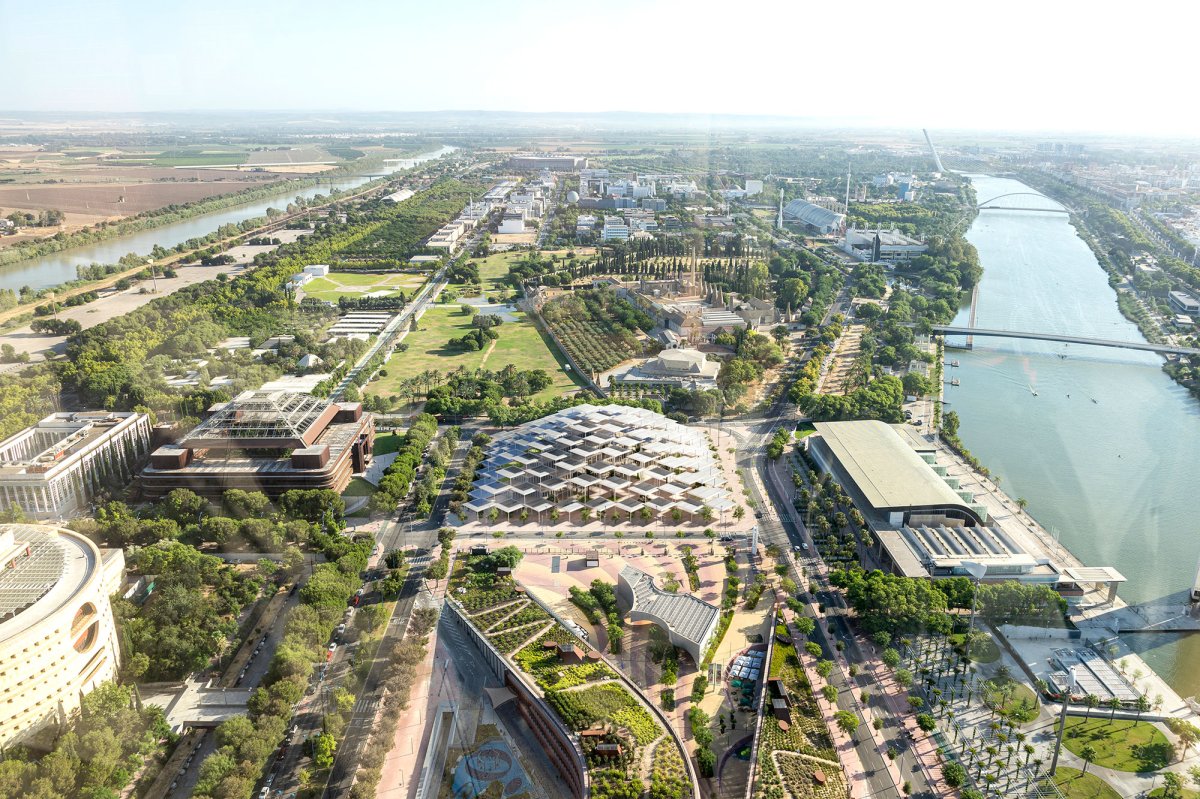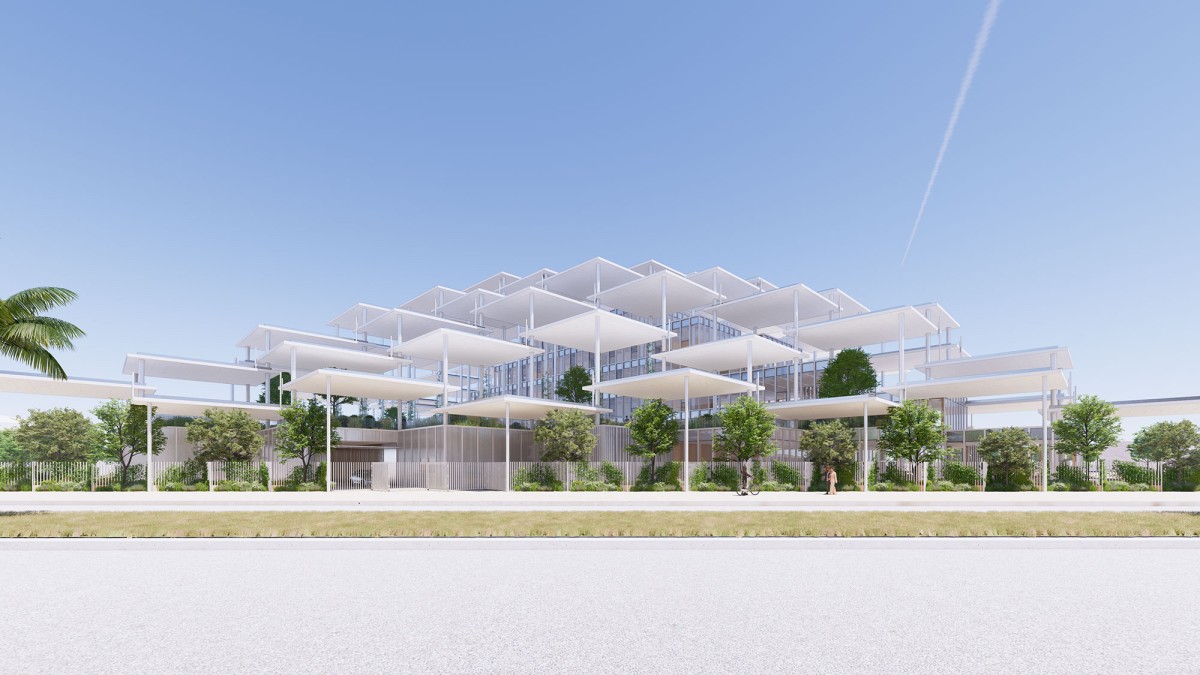The new permanent building for the Joint Research Center (JRC) in Seville is under construction. It aims to become a symbol of the New European Bauhaus and a landmark for Seville, Andalusia and Spain.
The plan is designed by renowned innovative architect Bjarke Ingels as the European Commission’s first net-positive building.
The project was the winner of an international architectural competition launched by the European Commission in 2021, endorsed by the Union Internationale des Architectes (UIA) and the Architects’ Council of Europe.
“The project aims to go beyond carbon neutrality (‘net zero’) by offsetting CO₂ from the atmosphere, primarily through generating solar energy that far exceeds its own operational needs”.

The design of the building is inspired by Seville’s traditional architecture. It will be a dome-shaped project with a solar panel-covering roof, providing shade for a square, a garden, and the building itself. The layout is designed to be flexible and adaptable to future needs, with a focus on using locally sourced materials such as limestone, wood and ceramics.
The new building will host Sevilla’s JRC site. Seville’s JRC was inaugurated in 1994 and hosts more than 400 international workers.
Beginning of constructions was celebrated in a high-level ceremony held on 30 June 2025, with keynote speeches by Ursula von der Leyen, President of the European Commission, EU Commissioners Ekaterina Zaharieva and Jessika Roswall, Bjarke Ingels, founder of BIG architects, who won the international design competition.
Find more here
Images © BIG - Courtesy of the European Commission









